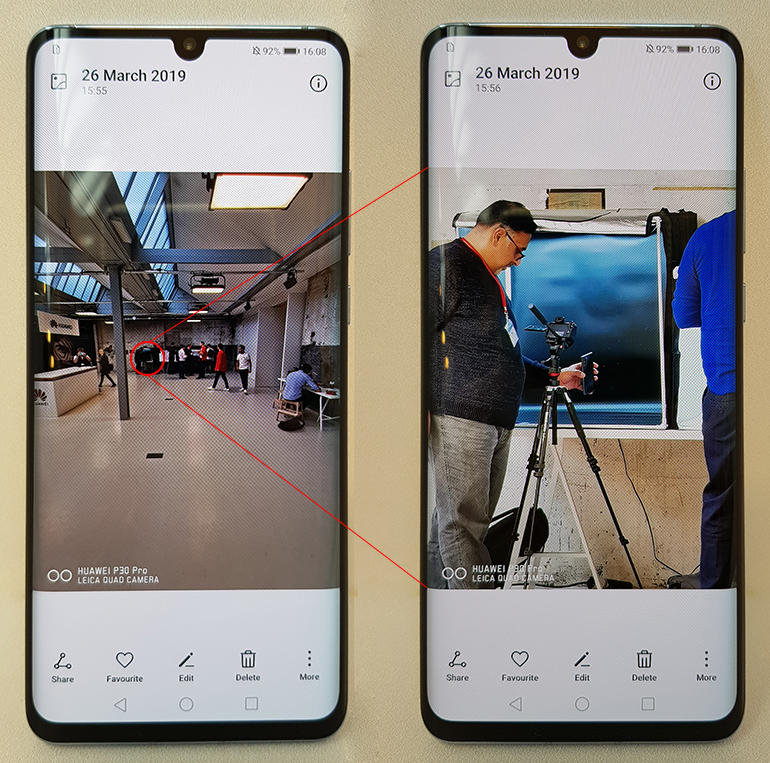In something of a surprise, Chinese manufacturer Huawei in 2018 overtook Apple as the largest shipper of smartphones in the world. Since then, Huawei has continued to demonstrate impressive growth, even as the company has had to contend with a number of espionage accusations and various scandals.
All that aside, Huawei continues to push the envelope hardware wise, with the company earlier today unveiling its next-gen smartphone line. Dubbed the P30 series, Huawei’s new devices, not surprisingly, bring a whole lot to the table with a particular focus on taking mobile photography to the next level.
Huawei’s top of the line P30 Pro features a quad camera system (made in conjunction with Leica) with a time-of-flight sensor for improved augmented reality functionality and bokeh shots. Specifically, the P30 Pro features a 40 megapixel lens, a 20 megapixel wide angle lens, a telephoto lens, and the aforementioned time of flight camera. Taken together, and arguably the most important feature of all, the device will offer up best-in-class photos in low light environments. Incidentally, the P30 has a triple-lens camera scheme on the back.
Particularly intriguing, though, is the zoom capabilities afforded by the P30 Pro. DXOMARK conducted some in-depth testing and came away incredibly impressed.
If you still needed a reason to spend money on a compact camera, it would have been for zoom reach, as even the best smartphone cameras could not provide usable zoom image quality beyond a 5x factor. This has now changed with the Huawei P30 Pro and its innovative zoom system that uses folded optics and a super-resolution algorithm, which finally makes usable 10x zoom on smartphones a reality.
The zoom on its own will make the new Huawei an extremely tempting option for many mobile photographers, but the camera performs very well in almost all other areas as well. The bokeh mode is the best we have seen; image detail and noise levels are excellent across all light levels; and the camera records high-quality footage in video mode. There is still some room for improvement in terms of color and artifacts, but these are relatively minor shortcomings that most users will be able to easily live with.
Add the super-wide-angle camera (which as with other devices with a similar camera setup, did not have an impact on Huawei’s DxOMark score) into the mix, and the P30 Pro is easily the most versatile mobile imaging tool to date, allowing you to cover a wider range of photographic situations than any other smartphone.
As for a specific example, check out the impressive zoom on this photo courtesy of Charles McLellan of ZDnet.

Spec wise, the P30 Pro features a 6.47-inch OLED display while the standard P30 comes with a 6.1-inch OLED display. Both phones feature fingerprint recognition technology built right into the display itself. Impressively, both devices can go from a dead battery to a 70% charge in just 30 minutes. Further, the P30 and P30 Pro will be able to wirelessly charge accessories such as headphones or even another phone. And speaking of which, it’s worth noting that the P30 sports a headphone jack while the P30 Pro does not.
The P30 Pro will ship with 8GB of RAM and will be available in 128GB, 256GB, and 512GB storage configurations. The P30 will ship with 6GB of RAM and 128GB of storage. The P30 will retail for $900 while the P30 Pro will be available for $1,127.
You can read more about the P30 Pro on Huawei’s website over here.







